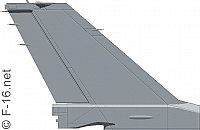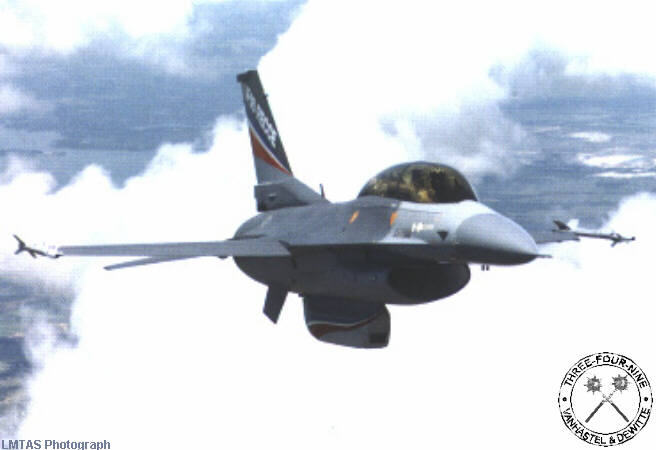History
Since the usage of the F-16 as a multi-role fighting platform, it has also been used as a dedicated reconnaissance platform. The first Air Force to equip its F-16s with reconnaissance sensors was the RNlAF. The Dutch replaced their F-104G Starfighters equipped with a reconnaissance system developed by the 'Oudedelft' company, with F-16 Fighting Falcons.
Instead of building these sensors inside the aircraft, and thus creating a 'reconnaissance fighter', they opted to develop a pod to house all the equipment. Eventually, it was more of a necessity that the RNLAF used their F-16s as reconnaisance platform, were they not to lose this task with the withdrawal of the F-104G.
At the end of the eighties, early nineties, a number of other air forces where also considering the F-16 as a recce platform, because their then current recce platforms needed urgent replacement (USA: RF-4C, Belgium: Mirage VBR, Denmark: J35XD,...).
RF-16/F-16(R)
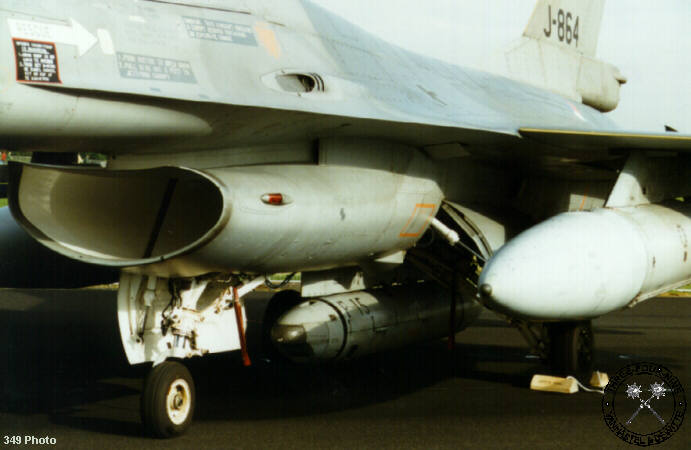
Some Dutch F-16s (F-16A's block 15 from 306 sqn at Volkel AB) are wired to carry the Oldelft "Orpheus" camera pods, salvaged off scrapped F-104G's. It's not really too different and the pod is controlled via a cockpit panel. These Dutch recce F-16s are designated sometimes as RF-16A, and sometimes as F-16A(R), which is probably the official designation.
All recce F-16s are block 15 A models and are operated by 306 squadron, Volkel AB. The RNLAF does not use F-16B models for recce missions, although 306 sqn has one or more two seaters. Studies are currently carried out to replace the Orpheus pod, possibly using ATARS equipment.
Three Belgian F-16s have also been modified in 1995 to carry the Orpheus pod (on loan from 306 sqn, RNLAF), pending a decision to buy recce pods from the Danish Per Udsen Company. All three aircraft were operated by the 2nd wing at Florennes AB. Official designation of the recce-capable aircraft is F-16(R).
RF-16 and ATARS
Several RF-16 reconnaissance versions have been proposed by General Dynamics. In 1988, the USAF decided at least in principle to replace the aging RF-4C Phantom fleet with RF-16s. These aircraft would carry the Control Data Corporation ATARS (Advanced Tactical Air Reconnaissance System) centerline pod, which would carry a variety of sensors. Included would be an electro-optical videotape system that allows images to be transmitted via digital datalink to a ground station, providing ground commanders with reconnaissance capabilities in real-time.
The USAF portion of ATARS was cancelled, but the Navy continued the development of an internal, pallet-mounted ATARS that replaces the gun in the F-18. Ironically, it is developed by the same contractor that is doing TARS. There are a few common items developed under the Navy program that keep development costs down (such as the sensor controller and the Medium Altitude Electro Optical sensor).
Baron Pod
The Red Baron recce pod carries four Vinten F95 cameras fitted with three-inch and eleven-inch lenses for vertical and oblique photography. The Red Baron pod also carries an infrared line scanner and a passive sensor system produced by Texas Instruments. The Red Baron pod is primarily used for low-level daytime operations. It has now been replaced by more modern equipment.
Recon/Optical Inc.
The USAF ANG's 192nd FG, based at Richmond ANGB, Virginia, is currently the sole USAF unit capable of Tactical Recce (IOC achieved in April 1995). For this purpose, the unit is in possession of a complement of block 30 F-16s equipped (or at least capable of being equipped with) with a recce system based on LMTAS' MMSA (Multi-Mission Sensor & Avionics) pod.
Four pods have been acquired so far, but an additional purchase of 20 is being considered. The major difference with the original pod lies in its contents: instead of traditional wet film, both recording system and storage medium are completely digital. The digital camera is build by Recon/Optical, Inc. (based on a normal KS-87 with electro-optical back), and in stead of wet film, the camera projects its images on a wafer holding 4M photosensitive electronic elements called pixels.
The wafer is in fact a charge-coupled device focal plane array, basically dividing the image in a grid with 4 million elements, with each element sampling the corresponding part of the image. Thus, image are translated into 4 megabyte digital images (assuming each element can be assigned a gray-scale value from 0 to 255, i.e. one byte) which are recorded on magnetic tape (DCRsi-240R digital cartridge recorder from Ampex Corporation). The tape can store 48 Gigabytes of digital info, roughly equivalent to 12,000 images or 1 hour flight time.
The control panel for the camera is built by Terma Electronics, Denmark, and allows the pilot to 'mark' certain images by hitting the uncage button. These marked images can then later be used to quickly find the interesting shots between the thousands of images on the tape.
The system also records radar altimeter info, inertial navigation data (both from the F-16s data bus) and GPS data (in the VA ANG's case from a receiver located on top of the ammo drum and feeding its info directly into the pod, thus not available in the cockpit).
The first Recce Block 30 F-16C flew on August 26th, 1995.
Recon/Optical was planning to fly a 25 MegaPixel array in the spring of 1996, offering enhanced resolution. The problem arising here is the size of the images. Therefore, image compressing techniques have to be applied in order to be able to store enough images on a tape to make the mission worthwhile.
TARS
On September 27th, 1996, The U.S. Air force awarded Lockheed Martin Tactical Systems, Syosset, N.Y., a firm fixed price contract valued at $20.2 million to procure the Theater Airborne Reconnaissance System (TARS), a podded electro-optical sensor system for under-the-weather, medium-to-high threat, daytime imagery collection on USAF Air National Guard Block 30 F-16C aircraft. The 36-month contract includes development, production and support of TARS, according to Maj Russ Prechtl, TARS Chief of Integration at Wright Patterson AFB, Ohio.
The contractor will design, build, integrate and test one TARS sensor pod and one squadron ground system (SGS), and concurrently produce 15 additional sensor pods and three SGSs.
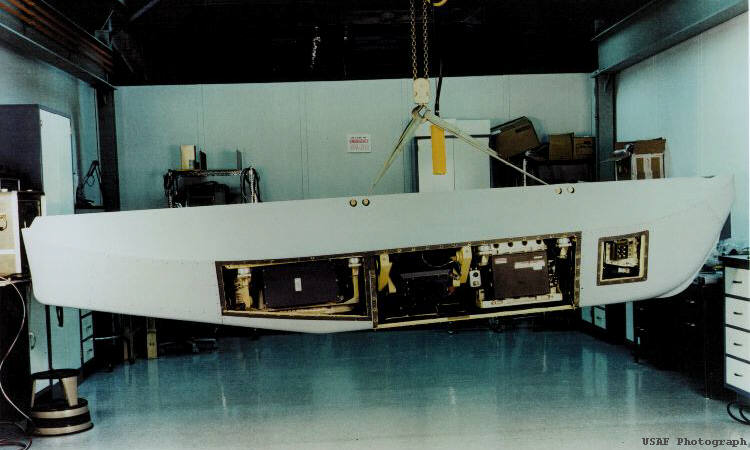
The contract also has options to retrofit or replace the four Recon/Optical Inc. (see above) interim pods and SGS at Richmond ANG Base, Va. Lockheed Martin Fairchild Systems (LMFS) will provide overall system integration. The TARS pod includes a Recon Optical, Inc (ROI) 25 MegaPixel framing camera outfitted with a 25-megapixel focal plane array mounted in the forward bay of the pod. (Earlier versions used a commercially available Hasselblad framing camera modified with a 16-megapixel focal plane array).
Lockheed Martin chose the modular reconnaissance pod, manufactured by Per Udsen in Denmark, to house the sensor package. Lockheed Martin also makes the Medium Altitude Electro-Optical (MAEO) sensor that will be outfitted in some of the Mid-Bay sections and will sub-contract with Per Udsen for the pod and environmental control system; with Terma, also in Denmark, for Electronic Warfare Management System interfaces, which the pilot uses to interface with the pod. Other sub-contractors are Ampex of Redwood City, CA for tape recorders, and Computing Devices - Hastings, located in Hastings, England for the Reconnaissance Management System and SGS.
The pod will also include provisions for future integration of the Navy and Marine production EO sensor in the mid-bay and a wideband data link. Future upgrades and modifications, such as datalink capability and advanced sensors, are also being investigated.
Fielding
The first TARS sensor pod and SGS will be tested at the F-16 Combined Test Force, Edwards AFB, Ca, beginning in March, 1998.
In the summer of 1998, The U.S. Air Force will activate the first Theater Airborne Reconnaissance System (TARS) squadron at Richmond ANGB, VA. The 149th FS flies the F-16C, and the TARS pods will replace the four interim pods currently in use. This marks the beginning of a 20-pod delivery.
| Parent Unit | Airbase | Squadron | Block | IOC |
|---|---|---|---|---|
| 192nd FW | Richmond, VA | 149th FS | F-16C/D | July 1998 |
| 127th W | Selfridge ANGB, MI | 107th FS | F-16C/D | October 1998 |
| 181st FW | Terre Haute, ID | 113th FS | F-16C/D | Januari 1999 |
| 113th FW | Andrews AFB,MD | 121st FS | F-16C/D | April 1999 |
| 185th FW | Sioux City, IA | 174th FS | F-16C/D | July 1999 |
Five ANG units will receive TARS: Richmond, VA; Selfridge ANG Base, MI; Terre Haute, ID, Andrews AFB, MD, and Sioux City, IA, with each unit receiving four sensor pods and one SGS. Based on current plans, an ANG Intel Squadron will receive a Deployable Transit Cased System, which will perform second level exploitation of TARS imagery via a six workstation arrangement.
Disposition of the interim Richmond pods and SGS will be made at a later date, after consultation with the ANG. According to Prechtl:
If we go with the replacement option, we'll have a common TARS configuration in the pods and SGS, which will simplify integration, operational and maintenance tasks, as well as future upgrades or modifications. TARS will supplement existing F-16C mission roles. In addition to the F-16s other missions, TARS equipped units will be able to conduct manned tactical reconnaissance. This brings tremendous flexibility to the warfighting punch of existing F-16 units, and improves decision-making abilities of field commanders facing operational limitations like adverse weather or high threat scenarios."MRP
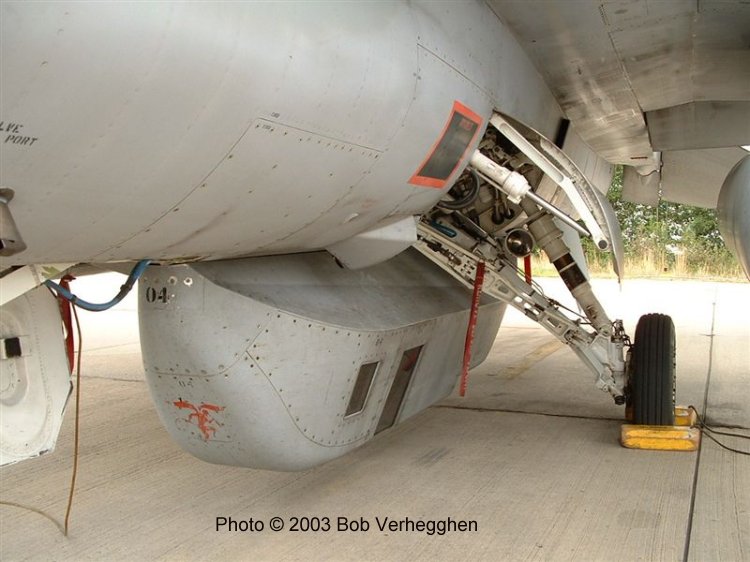
A number of F-16 users have opted for the MRP (Modular Reconnaissance Pod), which is manufactured by Per Udsen in Denmark. The USAF opted for this system to accommodate it's own TARS recce system. But also Denmark itself is using the pod to replace it's Red Baron pods. The last country, up to now, to use the pod is Belgium. With the withdrawal of it's Mirage VBR reconnaissance planes, the BAF was faced with a shortage of intelligence data, because they did not have any flying reconnaissance asset left. In 1996 the BAF ordered 8 MRP pods. They were delivered in 1998 and were equipped with 5 Vinten 360 cameras, obtained from it's scrapped Mirage fleet. Afterwards, these cameras were replaced by an electro-optical system (video), a "Vigil" IRLS (Infra Red Line Scan) and a real-time transmission data system.
The MRP can be configured for low or medium altitude flights.
Low altitude configuration (between 260 and 2,300 feet) :
- One electronic camera 8010 facing to the left (photo angles between 12° and 22°);
- One electronic camera 8010 facing to the left or to the right (photo angles between 12° and 22°);
- One electronic camera 8010 facing to the right (photo angles between 12° and 22°);
- One "Vigil" camera (IRLS).
Medium altitude configuration (between 5,700 and 33,000 feet) :
- One electronic camera 8010 facing to the left (photo angles between 12° and 22°);
- One electronic camera 8010 facing to the right (photo angles between 12° and 22°);
- One electronic camera 8042 (photo angles can be selected by the pilot between 8°, 12°, 22°, 32°, 40°, 60° and 90° both to the left or to the right);
- One "Vigil" camera (IRLS).
Specifications
Length: 13 feet 4 1/2 inches
Width: 2 feet 3 1/2 inches
Height: 2 feet 6 inches
Weight: Empty: 507.15 lbs., loaded with cameras for low altitude: 824.67 lbs, and loaded with cameras for medium altitude: 1,012.1 lbs
Special thanks
- Maj. Russ Prechtl
Please use this form to add any list any error or omissions you find in the above text.
Note: your comments will be displayed immediately on this page. If you wish to send a private comment to the webmasters, please use the Contact Us link.

